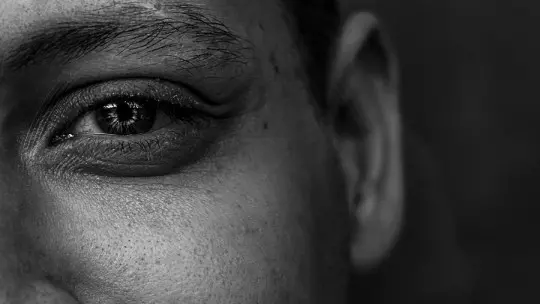Most people are taught that feelings determine actions, other people determine feelings, and circumstances determine happiness, but William Glasser turned that story on its head by arguing that the engine of change lives inside the choices a person makes moment to moment personal agency. Rather than seeing behavior as something pushed from the outside, he described a psychology of internal control in which individuals select actions and thoughts to better meet their needs, and in doing so, influence their feelings and physiology from the inside out internal control. This shift—from “what’s wrong with me or them” to “what do I truly want and what choices move me toward it”—sounds simple, yet it transforms therapy, classrooms, families, and workplaces because it restores responsibility without shaming and freedom without chaos responsible freedom.
Glasser’s central promise is both practical and humane: when people learn which basic needs are driving them and bring their daily choices into alignment with those needs, distress becomes information, relationships become collaborative, and progress becomes repeatable needs alignment. Rather than managing symptoms or policing misbehavior, his approach invites a person to clarify wants, examine what they are doing now, evaluate whether it is helping, and plan the smallest next step under their own control to move closer to a “quality world” they can clearly picture next step. The model challenges coercion in all forms—threats, bribes, chronic criticism—because attempts to force compliance produce resistance, resentment, or passive disengagement rather than genuine improvement no coercion.
Because Choice Theory sits at the intersection of motivation, relationships, and learning, its applications are unusually broad—from clinical counseling and coaching to parenting, teaching, team leadership, and self-management during stress broad utility. The throughline is consistent: understand needs, own choices, and build relationships that make it easier for everyone to choose well more of the time choose well.
The man and the movement
William Glasser, an American psychiatrist trained in the mid‑20th century, developed Reality Therapy first and later articulated Choice Theory as the psychological foundation that made his counseling method work foundational link. He saw again and again that long explanations of the past did not necessarily change present behavior, while clear commitments to do something different tomorrow often did present focus. Over decades, he refined a practical language for motivation and responsibility that clinicians, teachers, and managers could use without jargon or complicated protocols plain language.
As his ideas spread, they coalesced into communities of practice—schools reimagining discipline, organizations shifting from boss management to lead management, and therapists helping clients make workable plans instead of repeating endless problem stories practice communities. His work remains influential because it is at once rigorous in its logic and accessible in its tools, making it easy to test and adapt in real settings real settings.
Core assumptions
Choice Theory rests on several straightforward assumptions about human behavior that reframe both problems and possibilities clear frame. First, all behavior is purposeful, an attempt to meet basic needs as efficiently as the person believes possible in that moment, even when the attempt is clumsy or costly purposeful behavior. Second, people cannot control each other’s choices reliably or kindly, but they can create relationships and environments that make better choices easier and worse choices harder enable better.
Third, the only part of total behavior directly under immediate control is what a person does and, to a strong extent, what they think; feelings and physiology tend to follow those controllable fronts like cars following the front wheels front wheels. Fourth, blame and coercion often backfire, while clarity, collaboration, and consistent follow-through tend to produce both learning and loyalty over time less blame.
The five basic needs
Glasser organized motivation around five universal needs that vary in intensity across people and across time universal needs. Understanding these needs helps individuals interpret their urges and choose methods for meeting them that do less harm and more good.
- Survival: safety, health, and basic comfort that keep the body secured enough to think clearly safety first.
- Love and Belonging: connection, acceptance, and shared identity that anchor a person to others bonding need.
- Power/Achievement: competence, contribution, and a sense of impact that dignify effort earned impact.
- Freedom: autonomy, choice, and room to move that prevent suffocation and rebellion room to choose.
- Fun: play, curiosity, and joy that refresh attention and keep learning alive joy fuel.
Trouble often signals not a character flaw but a need gone unmet or met in unworkable ways—overcontrol when freedom is starving, aggression when power feels blocked, withdrawal when belonging feels unsafe needs signal. The practical task is not to suppress need but to meet it better, in ways that respect self and others meet better.
The quality world
Glasser described a “quality world” as the personal gallery of people, activities, places, beliefs, and possessions that, in a person’s mind, promise to satisfy needs in rich and meaningful ways inner gallery. These pictures are not static; they evolve with experiences, values, and relationships, which is why growth often requires updating what belongs in the gallery and what no longer fits update needed. Therapy and coaching help precisely here—clarifying pictures, enriching options, and aligning daily choices with the quality world so motivation pulls, not just pushes motivation pull.
When a person acts against their own quality world—working in ways that violate values, staying in relationships that poison belonging, or compromising health to appease others—distress is predictable because life is pointing away from what the person believes matters misalignment pain. Clarity about these pictures turns vague dissatisfaction into specific, doable changes in routines, boundaries, or commitments doable changes.
How perception works
Between the outside world and a chosen action sits perception: what the person notices, how it is filtered by beliefs, and how it is compared with the quality world filter focus. Glasser emphasized that people act on their perceived world, not the world as others see it, which is why debates over facts rarely shift behavior unless they also shift meaning meaning matters. Helping someone adjust how they read a situation—expanding options, challenging assumptions, or reinterpreting cues—often changes what they feel compelled to do next reframe choices.
This does not mean ignoring reality; it means respecting that cognition and emotion co‑author experience, and that changing either can change both co-author. In practice, a small reframe—“this isn’t rejection; it’s a request for clarity”—can unlock actions that meet belonging and power needs simultaneously unlock action.
Total behavior explained
Glasser packaged behavior into four parts that usually move together: acting, thinking, feeling, and physiology behavior package. Acting and thinking are most directly steerable; feelings and bodily states tend to follow the lead, which is why choosing a constructive action or thought often improves mood and calms the body afterward lead and follow. When people wait to feel motivated before acting, they grant the caboose control over the train; choosing small, values‑aligned actions brings the engine back to the front engine first.
This model legitimizes feelings without letting them be dictators—feelings inform choices, but choices and thoughts can be selected to shift feelings in healthier directions feelings inform. Over time, these micro‑choices accumulate into traits that others call discipline, optimism, or resilience because the person reliably steers in workable directions under stress micro choices.
Internal control vs external control
External control psychology seeks to change others via pressure—criticizing, blaming, threatening, bribing—under the assumption that force, shame, or dangling rewards will produce better behavior pressure trap. Glasser argued that such tactics corrode relationships and generate pushback, compliance without commitment, or covert sabotage that is worse than honest disagreement costly control. Choice Theory substitutes internal control: invite, negotiate, model, and make agreements that people can own because they fit needs and values on both sides invite ownership.
This shift is not weakness; it is strategic because voluntary alignment beats grudging compliance in speed, quality, and durability almost every time voluntary wins. In families, classrooms, and teams, internal control becomes visible as calm authority, clear limits, and consistent follow‑through that protect dignity while pursuing results calm authority.
The caring habits
Glasser contrasted two clusters of interpersonal habits: those that strengthen connection and those that poison it relationship habits. He called them the Caring Habits and the Deadly Habits.
- Supporting: showing belief in another’s capacity without taking control backing up.
- Encouraging: recognizing effort and progress without flattery real praise.
- Listening: seeking to understand before advising or fixing listen first.
- Accepting: allowing differences without contempt or coercion allow difference.
- Trusting: giving room to act, with accountability calibrated to risk room to act.
- Respecting: honoring boundaries, time, and values in word and deed honor lines.
- Negotiating differences: aiming for workable agreements, not total victory workable wins.
The Deadly Habits—criticizing, blaming, complaining, nagging, threatening, punishing, bribing to control—may spike short‑term compliance at the expense of long‑term goodwill and honesty deadly costs. Replacing even one deadly habit with a caring habit can measurably improve cooperation and morale in a matter of days swap one.
Reality Therapy in practice
Reality Therapy operationalizes Choice Theory in counseling through conversations that prioritize clarity, responsibility, and plans under personal control from talk to plan. It is present‑focused and choice‑focused: rather than dwelling exclusively on why a problem exists, it asks what the person wants now and what they are willing to do next to move toward it willing next. The counselor becomes a collaborator and coach who holds hope, asks precise questions, and invites commitments that are small enough to succeed and meaningful enough to matter precise invites.
Two core guardrails keep the work clean: avoid excuses that remove agency and avoid punishments that remove dignity, while insisting on honest evaluation of whether current behavior helps or hurts the person’s stated wants clean guardrails. This mixture of warmth and accountability is powerful because it respects both autonomy and impact at the same time warm accountability.
WDEP and planning
A frequently used structure in Reality Therapy is WDEP: Wants, Doing, Evaluation, Planning simple spine. The steps are straightforward:
- Wants: clarify what is wanted and why it matters, including quality world pictures clarify want.
- Doing: describe current actions and thoughts in concrete terms, not generalities describe now.
- Evaluation: ask whether current behavior is helping or hindering the stated wants helping test.
- Planning: design a plan the person can control, starting small and near‑term design small.
Plans are often built with SAMIC principles: Simple, Attainable, Measurable, Immediate, Controlled by the planner, and carried out Consistently with a clear Commitment SAMIC guide. The emphasis on control by the planner protects motivation because no one can truly commit to what they cannot actually do control matters.
Choice in classrooms
In education, Glasser’s ideas led to “Quality School” practices that shift from boss management to lead management—teachers creating conditions in which students choose quality work because it meets needs for belonging, power, freedom, and fun lead classrooms. Practices include clear expectations, meaningful choices in tasks, collaborative rule‑setting, and consistent, non‑coercive consequences that teach without humiliating teach dignity. Class meetings, problem‑solving circles, and portfolios of quality work give students voice, ownership, and evidence of growth that fuels intrinsic motivation voice ownership.
Discipline reframes from catching students being bad to catching them succeeding and inviting them into plans that repair harm and restore connection repair focus. Struggling behaviors are read as attempts to meet needs; the intervention is to meet the need in a better way, not to crush the need outright better ways.
Lead management at work
Organizations apply Choice Theory through lead management: define clear goals with the team, provide resources and coaching, remove unnecessary obstacles, and ask people to evaluate their own work against clear standards lead not boss. Managers become designers of environments and relationships that make good choices obvious and rewarding, rather than enforcers who rely on fear and surveillance design conditions. Feedback shifts from blame to problem‑solving, with employees co‑creating improvements they can own and sustain own improvements.
This approach fits naturally with continuous improvement cultures because it treats learning as a daily behavior and respects the dignity that fuels discretionary effort dignity drives. The result is higher quality, lower turnover, and a reputation for fairness that attracts talent without expensive gimmicks fairness magnet.
Parenting with choice
Choice‑based parenting blends clear limits with warm connection and meaningful input, trading power struggles for agreements that children help design and therefore help uphold agreements win. Parents name needs on both sides, offer bounded choices, and use consequences that are logical, timely, and respectful rather than arbitrary or shaming logical respect. Family meetings, repair rituals, and shared routines meet belonging and power needs while preserving freedom appropriate to age and context shared routines.
When a child’s behavior goes off the rails, the question becomes which need is being met poorly and how to meet it better; this stance keeps love central while insisting on responsibility love and limits. Over time, children internalize skills for self‑evaluation and self‑direction that outlast any single rule or reward self direction.
Health and self‑care
Choice Theory informs self‑management of stress, mood, and health behaviors by translating vague goals into controllable routines aligned with needs and values controllable routines. Instead of waiting for motivation, people pick tiny actions that satisfy needs—belonging via a daily check‑in, freedom via a brief walk, power via a finished task, fun via five minutes of play—knowing that feelings follow action feelings follow. Plans focus on what is within reach today, building credibility with oneself one kept promise at a time kept promises.
This reduces shame loops because the metric is not perfection but consistent, visible movement toward a clearly pictured quality world visible movement. Progress becomes a habit because it feels good and fits real life rather than requiring heroic willpower fits life.
Common pitfalls and critiques
No model fits every person or situation, and Choice Theory is no exception humble scope. Critics worry that emphasizing choice can sound like ignoring structural barriers or neurobiological constraints, or that it risks blaming people for struggles they did not cause context matters. Good practice addresses this by pairing personal agency with systemic awareness—expanding options where possible and naming constraints where they are real pair both.
Another concern is oversimplification: not all conflicts are solvable by better negotiation of needs when safety or power imbalances are severe safety first. Practitioners respond by using Choice Theory as a compass, not a hammer—prioritizing safety, rights, and trauma‑informed pacing before inviting new commitments wise pacing.
Integrations with other models
Choice Theory plays well with many evidence‑based methods because it clarifies motivation and responsibility without prescribing rigid techniques plays well. Cognitive‑behavioral tools fit naturally with total behavior and the emphasis on steering thoughts and actions to influence feelings and physiology CBT fit. Motivational interviewing resonates with the focus on autonomy, discrepancy between wants and doing, and eliciting self‑directed plans rather than imposing them MI resonance.
Positive psychology finds common ground in highlighting strengths, quality relationships, and meaningful engagement as drivers of well‑being positive link. Even systems thinking benefits, as caring habits scale from one‑to‑one relationships to team cultures that reduce friction and increase shared ownership scalable habits.
Practical tools and scripts
Short, repeatable prompts translate Choice Theory into daily practice quickly prompt power. Useful questions include: What do I really want here, and why does it matter to me; What am I doing right now that helps or hurts; What is one thing I can do differently in the next hour that is fully under my control three questions.
Simple sentence stems work under stress: When X happens, I feel Y, and I need Z; Would you be willing to A so I can B; I can offer C if you can offer D simple stems. For planning, keep it tiny: This week I will do E on Monday, Wednesday, Friday for ten minutes, and I will track it on a sticky note I see every morning keep tiny.
Case vignettes
A teenager skipping classes for freedom and fun negotiates a compact: choose one elective project that feels genuinely interesting, attend core classes, and check in daily with a mentor; freedom is met through choice, fun through interest, power through visible progress compact win. Skipping drops because the student now has a pathway that meets needs without wrecking futures, and success begets more success as quality work earns recognition needs met.
An overwhelmed manager stuck in blame shifts to lead management: invites the team to co‑define quality, removes two pointless reports, and starts weekly ten‑minute problem‑solving huddles; acting and thinking change first, morale and performance follow lead shift. Within weeks, rework declines and initiative rises because people feel respected and responsible at the same time double gain.
A couple trapped in criticism and withdrawal trade deadly habits for caring ones: they schedule a nightly five‑minute check‑in, replace one criticism per day with a clear request, and debrief weekly using Wants‑Doing‑Evaluation‑Planning habit swap. Arguments shorten and repair speeds up because belonging and power are met through cooperation rather than control faster repair.
Metrics and progress
Progress becomes visible fast when tracked simply and honestly visible progress. Look for fewer escalations, faster repairs, and more days where choices align with stated wants despite stress align days. In teams and classrooms, watch for earlier problem‑surfacing, clearer self‑evaluation, and more voluntary ownership of plans and results early surfacing.
Longer term, measure the health of relationships by reliability of agreements kept, ease of negotiation when needs clash, and the presence of play even during serious work relationship health. These are the hallmarks of environments where Choice Theory is not a slogan but a lived practice lived practice.
FAQs about William Glasser’s Theory of Choice
Is Choice Theory just positive thinking?
No; it is a practical framework for understanding needs, steering actions and thoughts, and evaluating whether current behavior helps or hurts the things that matter most practical frame.
Does it ignore trauma or biology?
It does not; good practice pairs personal agency with realistic pacing, safety, and supports, acknowledging constraints while still looking for choices a person can truly make today pairing care.
How does it differ from behaviorism?
Rather than relying on external rewards and punishments, it focuses on internal motivation, needs satisfaction, and plans that people own because they fit their quality world internal focus.
Can it work in tough environments?
Yes, but it starts with safety and small wins; over time, caring habits and clear agreements can improve cooperation even where distrust has been the norm small wins.
What if someone won’t cooperate?
Choice Theory avoids force and instead clarifies wants and limits, offers workable options, and lets natural, respectful consequences teach where persuasion fails respectful limits.
Isn’t this letting people off the hook?
It is the opposite; it invites honest self‑evaluation and commitments under personal control, which raises responsibility without resorting to shame or threat real responsibility.
How do I start using it tomorrow?
Ask the three questions—What do I want; What am I doing; Is it helping—and design one tiny, controllable action for today that moves you closer to your quality world start tiny.
Can teams adopt it without formal training?
Yes; begin by replacing one deadly habit with one caring habit, and by adding brief, routine self‑evaluation of work against clear, co‑created standards simple start.
What about accountability?
Accountability improves because agreements are co‑owned and specific; when plans are clear and chosen, follow‑through is easier to measure and coach fairly clear follow.
How will I know it’s working?
You will see more voluntary effort, faster repair after friction, and a steady drop in energy wasted on coercion or avoidance as collaboration becomes the default voluntary effort.














